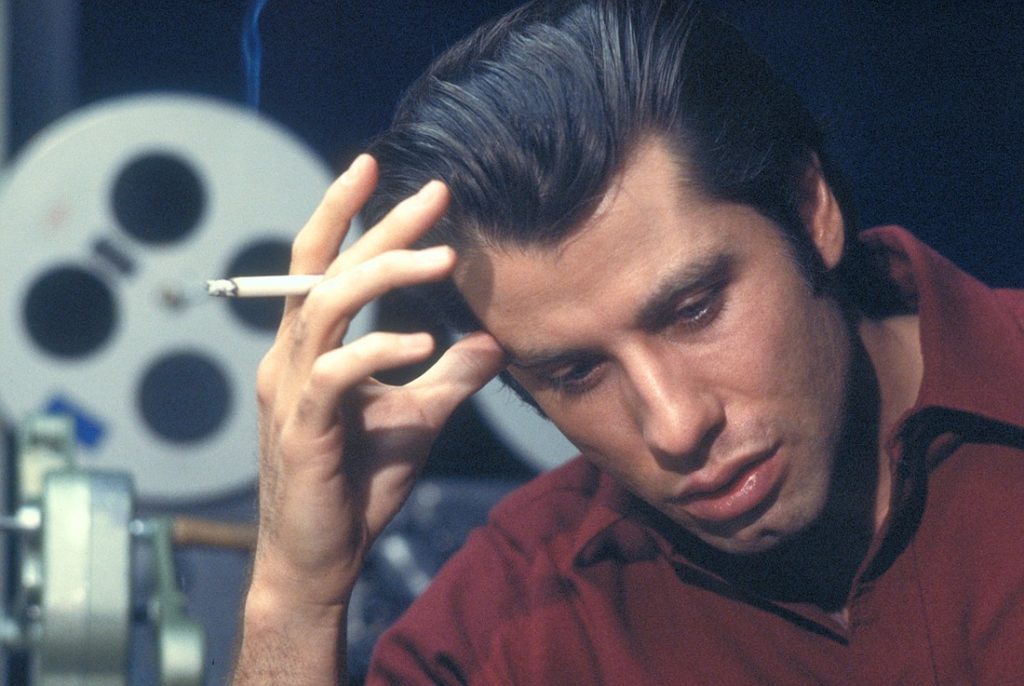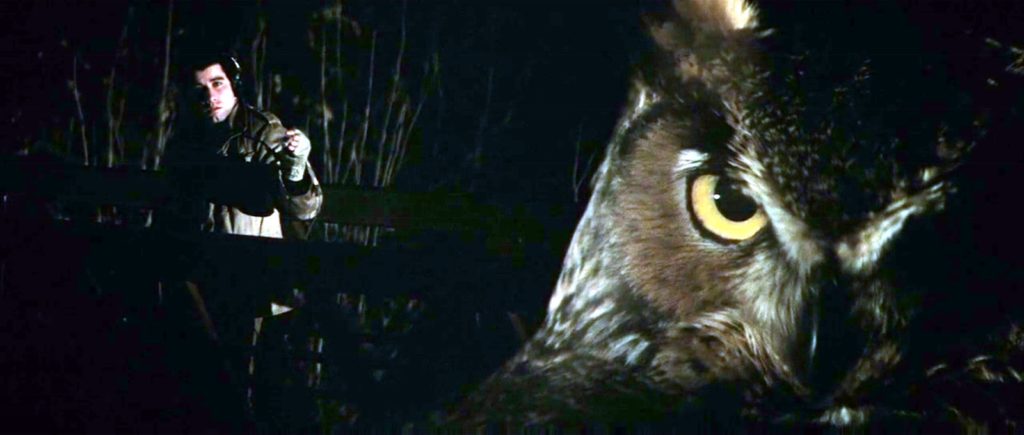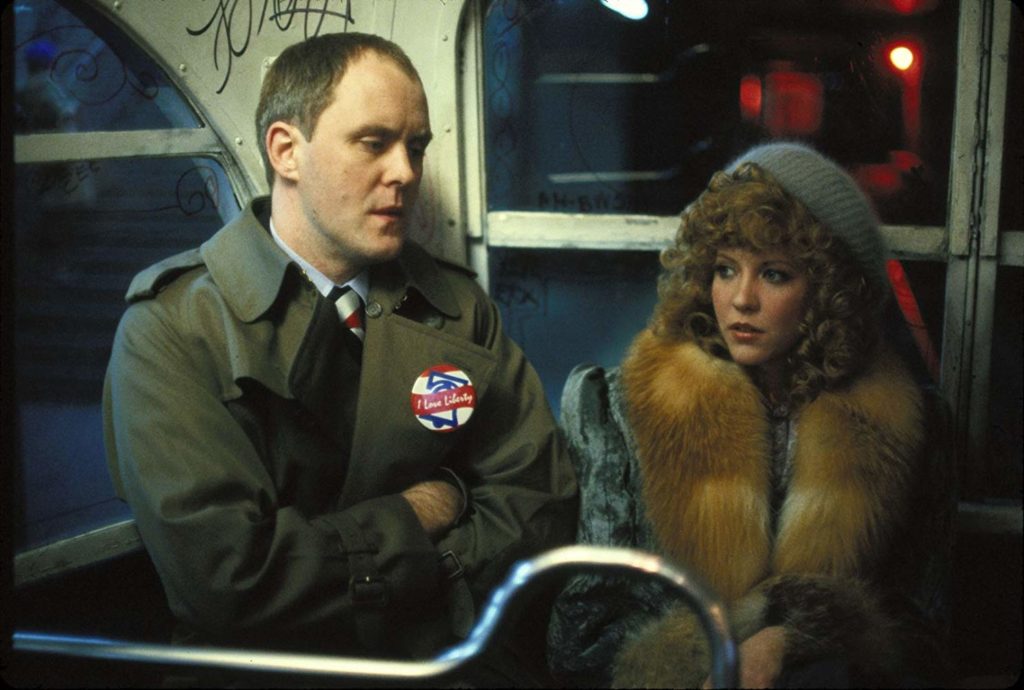|Chris Polley|

Blow Out plays at the Trylon Cinema from Sunday, February 4th, through Tuesday, February 6th. Visit trylon.org for tickets and more information.
A man takes a photograph, inspiring another to write a story, inspiring another to make a film, inspiring another to…make another film. This is how it works now, losing the magic and mystery of folktales passed down generation upon generation via oral storytelling but gaining the benefits of documentation and multiple mediums. Another possible downside, though? With the advent of recording technology and the Western world’s archival tendencies, storytellers can also get a little perfectionist and obsessive. Some day in the 1950s, Chilean photographer Sergio Larraín captured Paris’s Notre-Dame Cathedral, only to find out after developing the image and enlarging it that the photo revealed a couple on the verge of a kiss in the frame.1 Argentine writer Julio Cortázar learned of this image and came up with “Las babas del diablo,” a short story that fictionalized the idea of a candid snapshot unwittingly including an intimate moment that, then, was made all the more popular and provocative by Italian movie-making icon Michaelangelo Antonioni’s 1968 thriller Blow-Up. Last but not least, someone in America had to have a go at this tawdry tale, and it was none other than everyone’s favorite celluloid deviant of a certain era—Brian De Palma.
This was the perfect story for the director of risqué and voyeurist films that were literally called Obsession and Home Movies, not to mention already with big-time adaptation bonafides from putting Stephen King’s best-selling novel Carrie up on the silver screen. Thus, Blow Out, which famously swaps out the central conceit of the photograph in all three previous works for an audio clip recorded by a B-movie soundman, was born. And just like John Travolta’s protagonist Jack Terry in the film, De Palma himself dives headfirst into madness, making his feature a reimagining of an existing narrative unlike any other. What would unfurl during the writing, casting, filming, and editing process would wind up not only cementing the auteur in suspense cinema history, but double as a diary entry of the damned. Blow Out isn’t just De Palma’s take on an age-old story of trying to do what’s right in the face of madness—it’s a crying out of contrition in the confessional booth.

What exactly De Palma winds up divulging in his taut genre exercise requires first breaking down what Hilary Jane Smith calls “the De Palma Gaze” in her 40th-anniversary retrospective on Blow Out: “a macho, threatening perspective [of the] unfiltered patriarchal mind that’s as primal as a cro-magnon man.”2 Basically, it’s Laura Mulvey’s foundational Intro to Film Studies term “the male gaze” without any of the subtleties. In nearly all of De Palma’s films, especially those from the early-mid 80s such as Dressed to Kill and Body Double, the camera’s eye both desires possession and destruction of the female form at the center of its iris. Blow Out is the filmmaker indulging in both of these tendencies while also attempting to wriggle out of them through meta-commentary on the production, assemblage, and distribution of movies as a downright sordid and perhaps even embarrassing business model.
The film opens in medias res with what unabashedly seems to be a nod to John Carpenter’s 1979 horror classic Halloween, replete with a roving POV shot of a slasher stalking coeds, only for De Palma to pull back the curtain. Here, it is revealed that the scene is nothing more than an exploitation flick in post-production being played back in a smoke-filled soundbooth by Travolta’s Jack and co. coming to a frustrating conclusion that the murder victim’s scream isn’t sufficient for a paying audience. It’s the kind of sardonic postmodernism that so effortlessly feels like what Hitchcock (whom De Palma is routinely criticized for aping) might have been capable of had he lived more than a few months past Reagan’s inauguration. But that’s arguably where the Hitchcockisms end for Blow Out. For Film Comment, storied critic Michael Sragnow likens the 1981 film to a kind of reverse-Vertigo, saying, “De Palma and his hero don’t spend the movie creating an illusion but uncovering a reality moviegoers recognize.”3 What happens for the next 100 minutes is still all things De Palma/male gaze (prostitute with a heart of gold, serial killer of women thrown into the mix with graphic imagery, etc.) but with one hugely important distinction: the guy doesn’t get the girl, and he (spoiler alert) neither ends up vindicated nor released from his paranoid trauma.

When Jack unwittingly records the audio of a governor’s assassination while collecting ambient sounds for his job, De Palma isn’t shy to emphasize just how exhilarating it already is to witness the medium’s technological prowess as well as the simple beauty of a frog’s croak or the wind gently blowing. Then, a couple’s public displays of affection and ensuing skirmish catch our attention and suddenly all the quiet is left behind. And then after that, a gunshot immediately followed by a sedan careening into a creek and sinking fast. The equipment is temporarily abandoned and our hero is in the water attempting to save whoever may be in the vehicle. The natural world is long gone, and yet it’s also about to swallow up at least one innocent person whole. Jack’s rescue of Nancy Allen’s Sally proves the adage: No good deed goes unpunished. From then on, Jack and his audio reel are left to piece together who else was in that, who wanted him dead, and why. De Palma, a visual artist who traffics in the macabre, realizes that the same is likely true for him: he’s trapped himself in this scenario whether he meant to or not. As Michael Koresky says for Reverse Shot, the film “seems like penance for all of De Palma’s past and future cinematic crimes, as well as ours as viewers.”4 He is the Sisyphus of the moving image—forever fated to revel in the dark side of creation, only to let his creations inevitably tear him apart, just for him to start over again—and so are we.
Part of what makes the guilt go down the gullet with such ease is how joyously vibrant even Blow Out’s most stressful and problematic sequences are. Before John Lithgow shows up and dominates the narrative as a stoic, calculated killer who may be in on and/or working outside the story’s central conspiracy, the most rousing scene is when Jack is going through a tedious, laborious process of matching his audio to a spread of still images in a tabloid of the car’s swerve and descent off the bridge. Travolta is effortless when he feverishly uses a wide array of tools to splice photos and sound together, frame by frame. The film’s editor and longtime De Palma collaborator, Paul Hirsch, recalls in an interview with CineMontage, “I would be editing a piece of film showing Jack’s hand making a mark on the film with a grease pencil, and I would be looking at my own hand marking it with a real grease pencil.”5 He goes on to liken the experience to being inside an M.C. Escher drawing, alluding to the self-reflexive and labyrinthine works of the famous Dutch visual artist. It’s easy to imagine—and when watching or rewatching the film, it’s visceral—the kind of neurotic, obsessive energy this artistic ouroboros conjures up. On the other hand (no pun intended), another way to describe metatextuality is simple, beautiful, and healthy: it’s called reflection. Perhaps it’s okay to look deep into the photograph like Larrain did back in 1950s Paris, as long as you treat the gaze less like a window and more like a mirror.
Edited by Finn Odum
- Sheeran, Stephen. “Antonioni’s Blow-up, Cortázar’s ‘Devil’s Drool,’ a photo by Larrain Grist for the rabbit hole!” Sherbrooke Record (August 3, 2018). ↩︎
- Smith, Hilary Jane. “I Hate When a Man Is Right: Brian De Palma’s BLOW OUT at 40.” Merry-Go-Round Magazine (July 20, 2021). ↩︎
- Sragnow, Michael. “Deep Focus: De Palma.” Film Comment (June 9, 2016). ↩︎
- Koresky, Michael. “Blow Out: Take Two.” Reverse Shot (November 12, 2006). ↩︎
- Tonguette, Peter. “Paul Hirsch on ‘Blow Out’.” CineMontage (September 1, 2014). ↩︎
